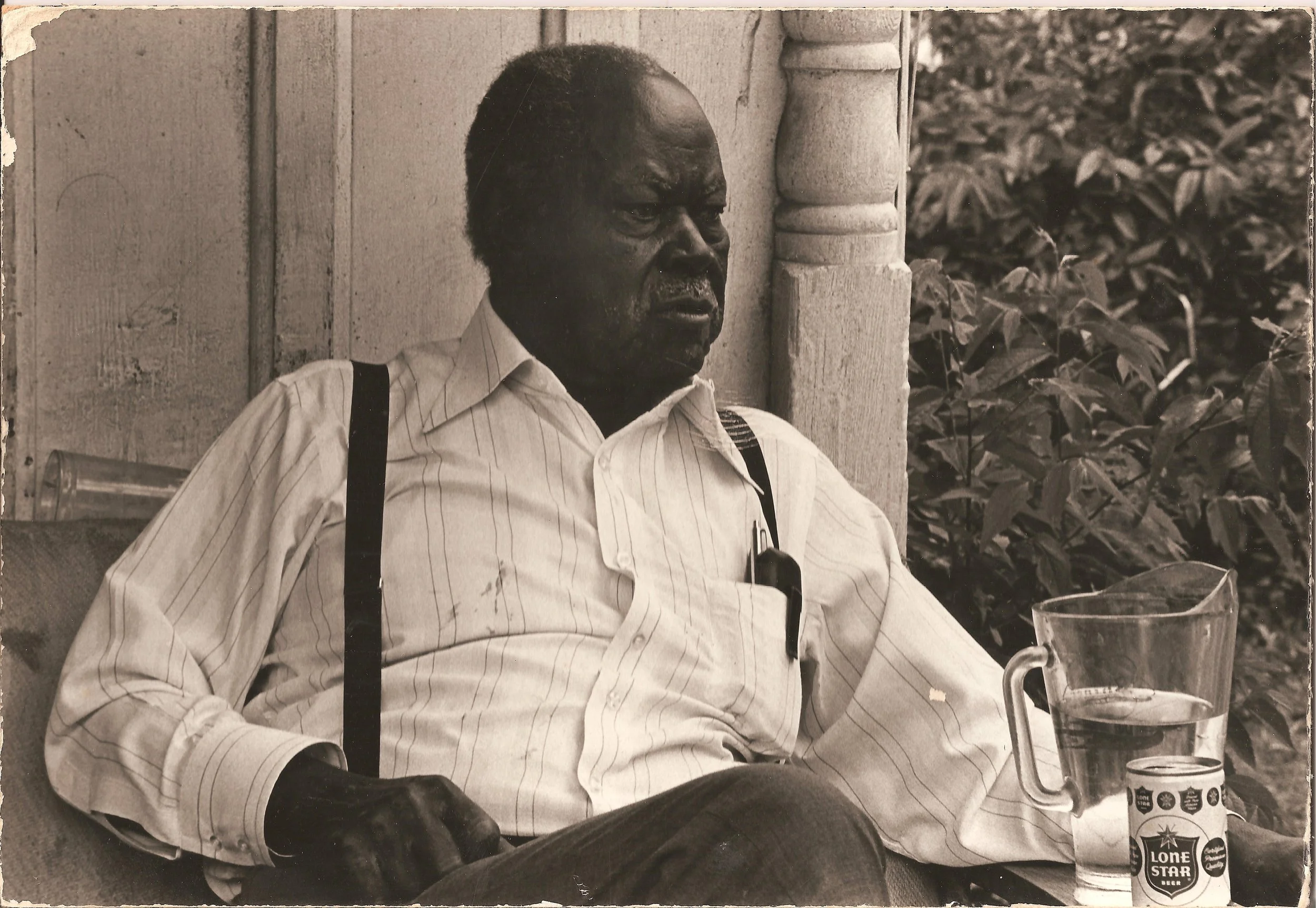February is Black History Month. In Celebration, We Profile Seymour Washington
Black history is an integral part of American history and the CCDC believes it should be recognized all year round. However, the organization applauds the fact that every February, this country focuses specific attention on the people, events, rich culture, experiences and societal contributions of Black America. Therefore, throughout this month, the CCDC will celebrate Clarksville’s Black history using its blog and social media accounts.
We start by remembering Seymour Washington, a farrier who shod horses throughout Travis and Hays Counties and was known as the “the Walking Blacksmith.” Born in 1896, Washington lived as an adult at 1615 West 12th Street, where he kept a forge and anvil in his backyard. He learned his craft starting at age 14 by apprenticing in 1910 at a blacksmith shop on Lavaca. However, by his own account, he was virtually born to be a blacksmith: “When I was a baby, they’d put things out – a saw, a spoon, a frying pan, a claw hammer – to see what I’d go for and what I’d be. They say I always went for the hammer.”
Uncle Seymour Sitting on His Front Porch
Once people began traveling by car, rather than horse, Washington went to work for the City of Austin’s Sanitation Department. At the same time, he took care of horses owned by Old West Austin residents who rode them for pleasure, horses on ranches outside of Austin, and the horses owned by the Barnum and Bailey Circus whenever it came to town. In addition, Washington drove a buggy for Julia Pease, who lived at Woodlawn, the antebellum mansion at the corner of Niles and Pease Roads. Note: During the Civil War, Woodlawn was the residence of Lucadia and Elisha Pease, a former Texas governor. The couple was from Connecticut and described themselves as abolitionists, yet they owned slaves, some of whom later settled in Clarksville as freedmen and women. Some of these individuals continued working at the mansion caring for children, doing laundry, cleaning, working in the yard, etc.
According to those who knew him, Washington was a friendly, generous man and a gifted storyteller. There was always a pot of beans or greens on his stove and if anyone in Clarksville didn’t have a place to go on Thanksgiving or Christmas, they knew they could eat turkey at his home.
When hippies moved to Clarksville in search of cheap rent during the late 1960s and early 1970s, Washington befriended many of them. They affectionately referred to him as “Uncle Seymour” and hung out at his house.
After Washington died in 1976, he achieved a bit of fame because of his emotionally-moving appearance in the cult documentary Heart Worn Highways, part of which was filmed in his kitchen. The film was about the outlaw country genre of music that was getting its start in Austin and Nashville. Townes Van Zandt, a resident of Clarksville and a friend of Washington’s, was one of the musicians featured in the film. Washington’s appearance in the movie can be viewed on YouTube and his comments can be found on music sites like Spotify and Apple Music.

